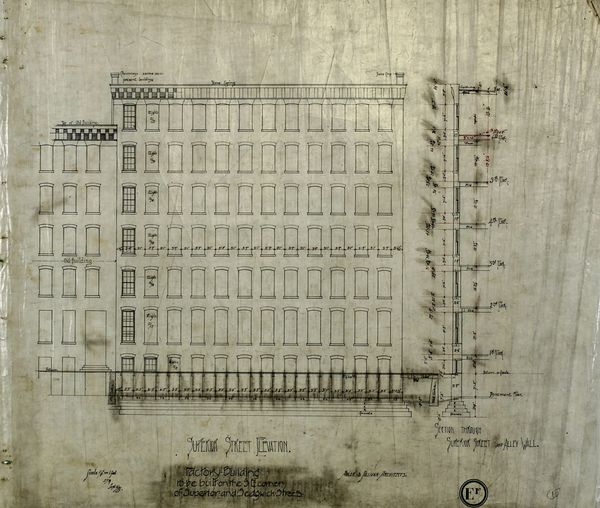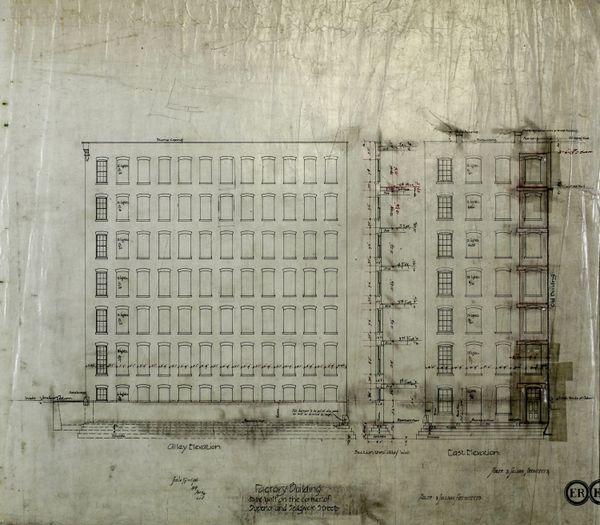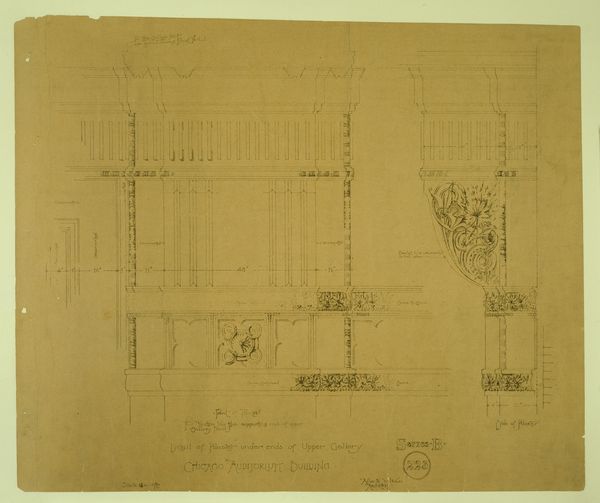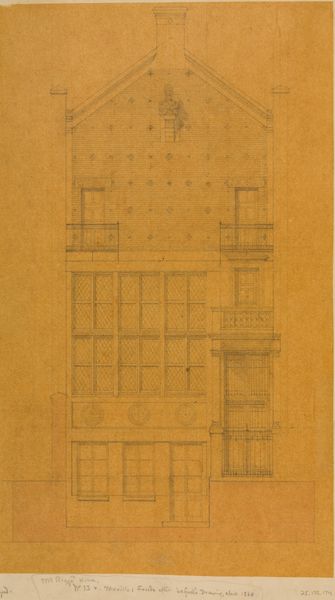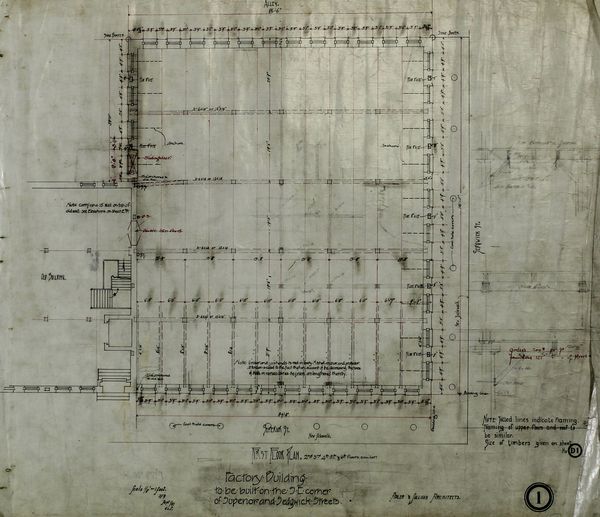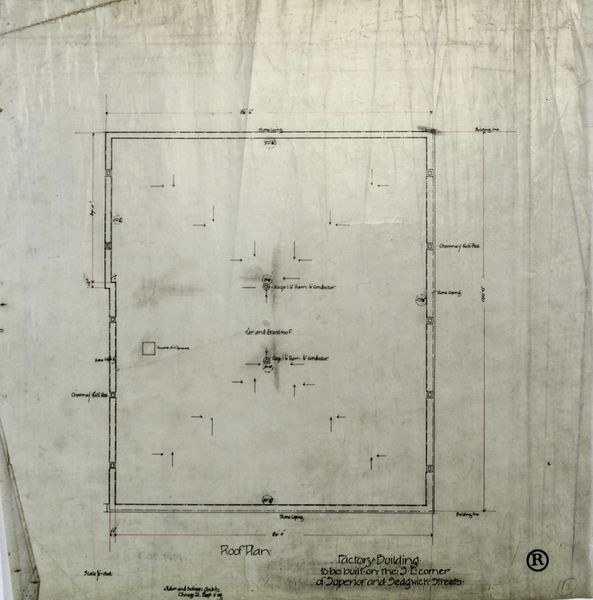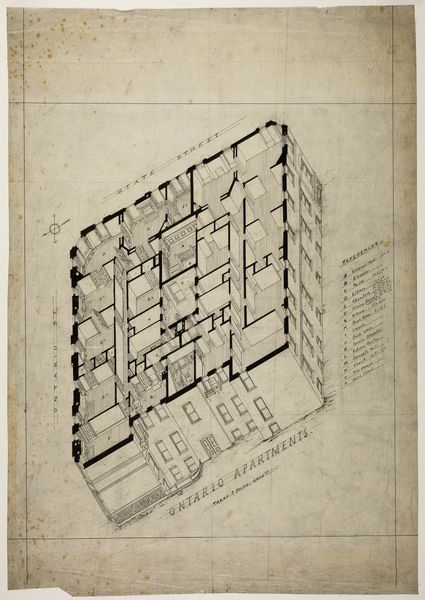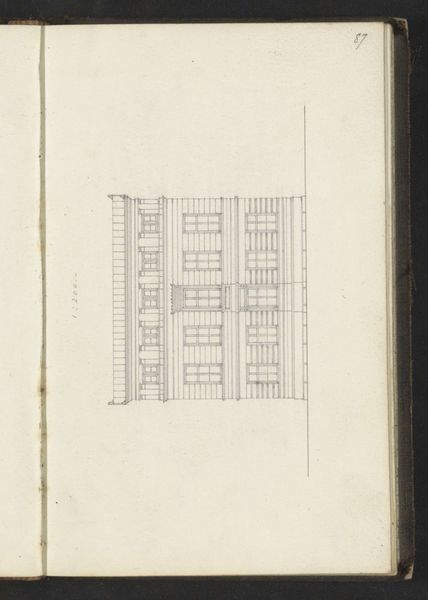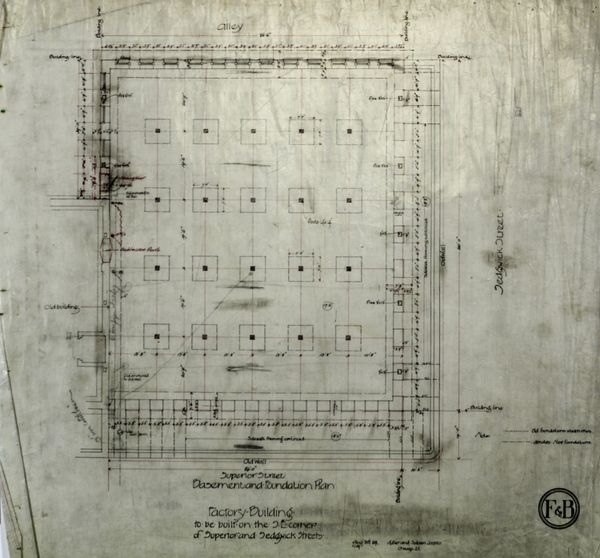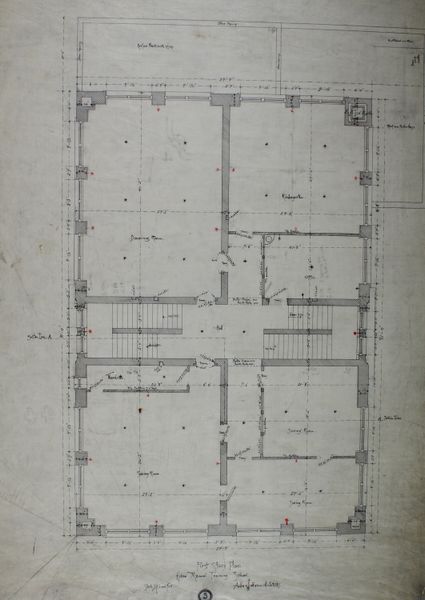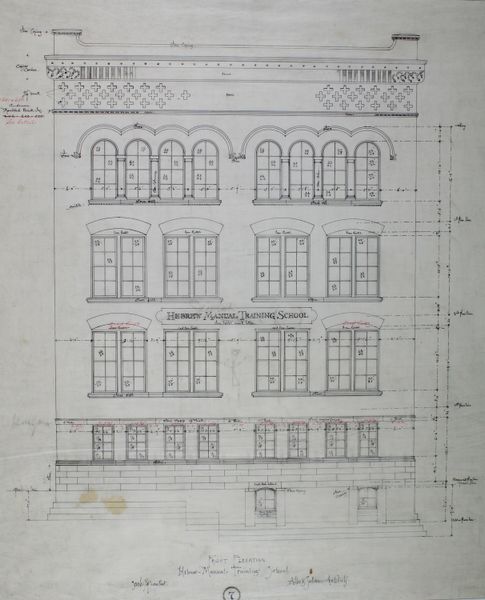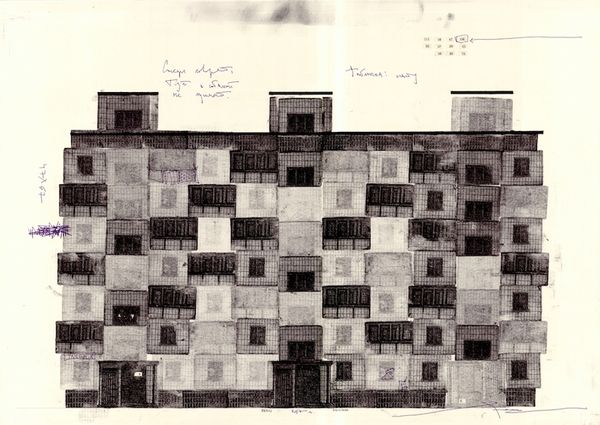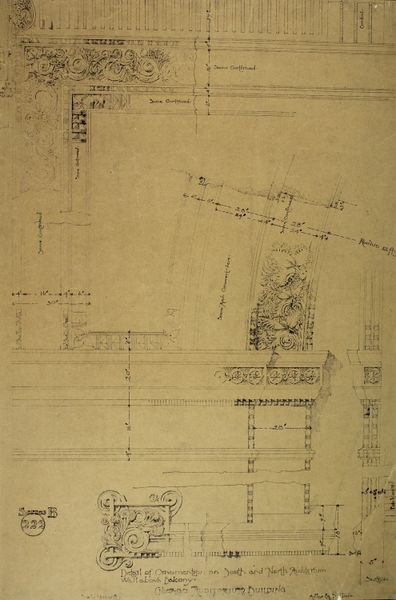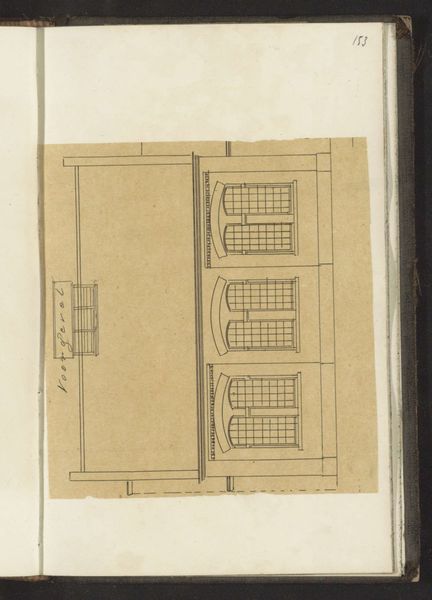
Brunswick Balke and Collender Company Factory Building, Chicago, Illinois, Elevation 1891
0:00
0:00
drawing, ink, pen, architecture
#
drawing
#
neoclassicism
#
ink
#
line
#
pen
#
cityscape
#
watercolor
#
architecture
Dimensions: 47 × 52 cm (18 1/2 × 20 1/2 in.)
Copyright: Public Domain
Curator: Right, so let's have a look at this piece. It’s titled "Brunswick Balke and Collender Company Factory Building, Chicago, Illinois, Elevation" from 1891, an architectural drawing rendered with pen and ink, now held at The Art Institute of Chicago, conceived by Edward Dupaquier Dart. Editor: Oh, my initial thought? Stark. But beautiful in its plainness, its grid-like formation and subdued tone evoking a feeling of the industrial revolution’s rigid aesthetic. It seems…unsmiling, very businesslike. Curator: Exactly! What you see here is architectural neoclassicism—the building design reflecting its time—emphasizing symmetry, order, and perhaps a visual manifestation of efficiency, typical for factory design back then. Look at the relentless repetition of those window frames and the unwavering horizontal lines. Editor: Those rhythmic rectangles! Each is uniform, echoing across the façade—it’s like a mechanical poem. This kind of line drawing showcases not only architectural intention but also something about the social values, perhaps aspiring to some level of functional aesthetic or the values related to industrial standardization, but the facade also presents like a temple! Curator: Precisely, an imposing front for industry. But look closely; it's not just a dry document. Dart’s linework possesses delicacy. There’s a kind of austere elegance achieved. Think about the cultural context too—Chicago on the cusp of massive growth. Factories meant progress. And the facade presents a face to that. Editor: I wonder if Dart imagined those windows streaming light on factory floors, fueling the Second Industrial Revolution or perhaps he was more intent on simply creating a template. Is there room here for human feeling amidst this industry? Perhaps it is the draftmen's dedication to creating beauty with an ink well and ruler. Curator: It raises all sorts of questions, doesn't it? In a way it encapsulates both ambition and control of this moment of late nineteenth-century optimism through design. Editor: Optimism and the beauty that some find in relentless order, rendered in the hand of someone documenting its arrival. Food for thought.
Comments
No comments
Be the first to comment and join the conversation on the ultimate creative platform.
